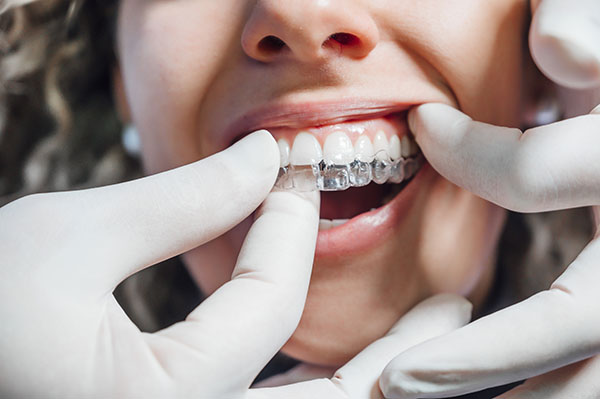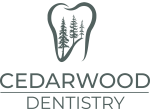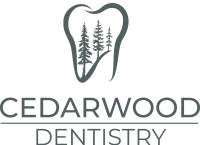If you’re considering ways to straighten your smile, you may be wondering: invisalign or braces? These are the two most common methods for straightening your smile line, but choosing between the two involves understanding what makes them different to begin with. Dr. Chris Wolberg of Cedarwood Dentistry in Midlothian, Virginia, explains the differences between these options, helping patients make an informed decision.
Contents
Invisalign or Braces: Understanding the basics
When it comes to straightening your teeth, the debate often centers around “Invisalign or braces” – two leading methods for correcting dental misalignment. Invisalign, a well-known brand of clear aligners, offers a modern approach with transparent, removable trays that mold to the shape of your teeth.
On the other hand, traditional braces involve fixed metal or ceramic brackets and wires. Clear aligners (the generic term for any brand of Invisalign-like treatments), are often offered through both general dentistry practices as well as orthodontic specialists. However, braces are often reserved for orthodontic specialists.
Clear Aligners (Invisalign)
Clear Aligner Treatment Duration
Clear aligners typically require 6 months to 2 years of treatment, depending on the complexity of the case. During this time period, patients need to come in to be fitted and receive a new set of clear aligner trays about every four to six weeks.
Maintenance and Lifestyle Impact Using Clear Aligners
Clear aligner trays are removable, making it easier to maintain oral hygiene through brushing and flossing, as well as eat comfortably. However, they require commitment to wearing them consistently and require more frequent, but shorter visits to your dentist for refitting.
Cost and Insurance Coverage of Clear Aligners
The cost of clear aligner treatment can vary. Insurance coverage may also vary, but pre-authorization can help determine out-of-pocket costs. At Cedarwood Dentistry, our team of dental care professionals helps each patient get the most out of their insurance plans as possible, providing the thorough documentation needed for pre-approval
Clear Aligner Post-Treatment Care
Retainers are essential post-treatment to maintain results. Dr. Wolberg emphasizes the importance of wearing retainers indefinitely to prevent teeth from shifting.
Who is Best Suited for Clear Aligner Treatment?
Ideal for adults and those with mild dental issues, clear aligners offer a less noticeable, more comfortable treatment option. It’s particularly popular among those who had braces in the past and are looking for minor corrections.

Traditional Braces
Braces Treatment Duration
Traditional braces usually require 1 to 2 years, but more complex cases can take even longer, sometimes lasting several years. Braces are effective for a wide range of orthodontic issues, including severe misalignments.
Braces Maintenance and Lifestyle Impact
Braces require meticulous cleaning to prevent cavities and gum disease. Dietary restrictions are also necessary to avoid damaging the braces. While undergoing treatment with braces, it is best to avoid chewy, sticky foods that might get caught in the braces.
Cost and Insurance Coverage of Braces
The cost of traditional braces is generally comparable to that of clear aligners. Insurance coverage is more likely for braces, especially for children and teenagers.
Post-Treatment Care for Braces
As with clear aligners, wearing retainers post-treatment is crucial to maintain the results achieved with braces.
Who is Best Suited for Braces?
Braces are often recommended for younger patients and those with more complex dental issues that require more intensive correction.
Choosing the Right Option
Choosing between clear aligners and braces depends on individual needs, lifestyle, and the complexity of dental issues.
“For those weighing ‘Invisalign or braces,’ it’s crucial to consider not just the aesthetic aspects but also the functional needs of your teeth,” explains Dr. Wolberg. “Clear aligners are often ideal for adults seeking a less noticeable solution for mild to moderate alignment issues. However, traditional braces might be the better choice for more complex dental corrections – like issues with your bite – especially in younger patients.”
Consulting with a dental professional like Dr. Wolberg is crucial for personalized advice and selecting the best option for you.
Let Cedarwood Dentistry Help You Make an Informed Decision
When considering invisalign or braces, there are a lot of things to consider. Ultimately, the decision is one that should be made with the expert advice of a trained dental professional, and one that understands your individual needs and smile goals. Reach out to Cedarwood Dentistry to discuss ways to improve your smile and maintain your overall oral health. We can’t wait to serve you!
Share the love!


